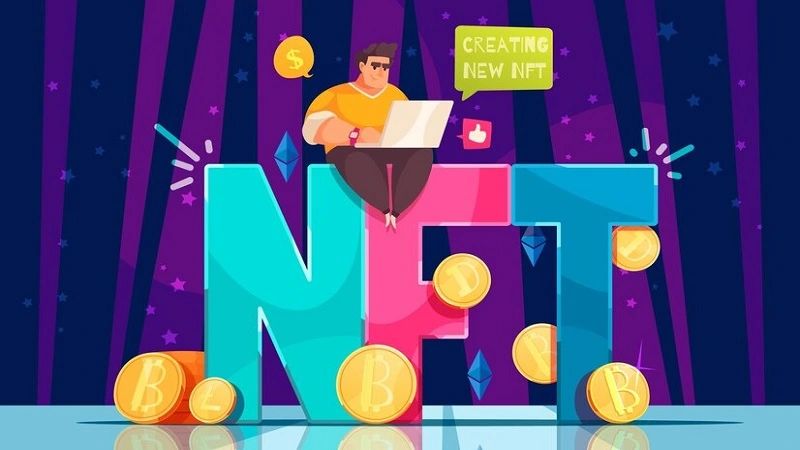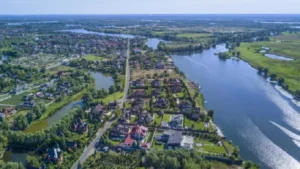Nft February Octoberirwindecrypt: Exploring the Future of Digital Art
In recent years, Non-Fungible Tokens (NFTs) have taken the digital world by storm, offering artists and collectors a new avenue to create and monetize art. The keyword “nft february octoberirwindecrypt” encapsulates an exciting narrative in the NFT space, highlighting key events and trends from February to October. This article will explore the evolution of NFTs, focusing on their significance in the art world and how they continue to shape the future of digital ownership.
What Are NFTs?
Non-Fungible Tokens are unique digital assets that represent ownership of a specific item or piece of content, verified through blockchain technology. Unlike cryptocurrencies such as Bitcoin or Ethereum, which are fungible and can be exchanged on a one-to-one basis, NFTs are one-of-a-kind. This uniqueness gives them value, especially in art, gaming, and collectibles.
The Rise of NFTs in February 2023
February 2023 marked a pivotal moment for the NFT market. According to data from NonFungible.com, the NFT market saw a remarkable surge, with sales reaching $1.2 billion, a 20% increase from January. Key events included high-profile auctions, including Beeple’s latest works and various celebrity collaborations, which further fueled interest.
Artists began to embrace NFTs as a new medium, leading to a diverse range of artistic expressions, from digital paintings to interactive installations. This month showcased not just the art itself but the stories behind them, enhancing their appeal.
The Octoberirwindecrypt Phenomenon
By October, the NFT landscape had evolved significantly, with “Octoberirwindecrypt” becoming a popular term among enthusiasts. This term reflects a movement that combines both art and cryptography, emphasizing the secure and transparent nature of NFTs.
Several projects launched during this time highlighted innovative use cases, including virtual reality galleries and decentralized marketplaces. Artists began exploring themes like climate change and social justice, making NFTs not just a medium for profit but a platform for advocacy and awareness.
The Impact of NFTs on Digital Art
NFTs have revolutionized the way artists create, share, and monetize their work. For many, this new medium has removed barriers to entry, allowing independent artists to reach global audiences without needing traditional galleries.
Statistics indicate that in 2023, 60% of NFT sales were made by independent artists, reflecting a significant shift away from established institutions. This democratization of art has empowered creators and offered collectors a broader range of choices.
Market Statistics and Trends
The NFT market has witnessed unprecedented growth. In 2023 alone, the global NFT market was valued at approximately $40 billion. According to Chainalysis, transactions involving NFTs grew by 45% in the first half of the year, with Ethereum and Solana emerging as dominant blockchain platforms for NFT transactions.
- Total NFT sales (2023): $40 billion
- Monthly sales in February 2023: $1.2 billion
- Growth rate of NFT transactions (H1 2023): 45%
These statistics underscore the increasing interest and investment in NFTs, signaling that this trend is more than a passing fad.
Case Studies of Successful NFT Projects
Several standout projects have shaped the NFT landscape. One of the most notable is CryptoPunks, a collection of 10,000 unique 24×24 pixel art images. Launched in 2017, CryptoPunks became a symbol of the NFT craze, with individual punks selling for millions of dollars.
Another significant player is Bored Ape Yacht Club (BAYC), a collection of cartoon apes that gained immense popularity and built a strong community. As of October 2023, the floor price for a Bored Ape NFT hovered around $200,000, showcasing the demand and cultural significance of these digital assets.
The Role of Blockchain in NFTs
Blockchain technology is the backbone of the NFT ecosystem. By utilizing decentralized ledgers, blockchain ensures that each NFT is unique and verifiable. Ethereum, the most widely used platform for NFTs, enables smart contracts that automate the buying and selling process, enhancing security and trust.
As blockchain technology continues to evolve, other platforms like Flow and Tezos are gaining traction, offering faster transactions and lower fees. This diversification may shape the future landscape of NFTs, providing artists and collectors with more options.
Challenges and Controversies
Despite their rapid rise, NFTs face several challenges and controversies. One major concern is the environmental impact of blockchain technology, particularly proof-of-work systems that require substantial energy consumption. In response, many platforms are transitioning to more eco-friendly alternatives, such as proof-of-stake models.
Additionally, issues of copyright and ownership rights have surfaced. The ease of copying digital art raises questions about what it means to own an NFT. Legal frameworks are still catching up to the rapidly evolving NFT market, leading to potential disputes and confusion.
The Future of NFTs
Looking ahead, the future of NFTs appears bright yet uncertain. As technology continues to develop, we can expect innovations that enhance user experience and accessibility. Virtual and augmented reality integration could redefine how we experience art, blurring the lines between physical and digital spaces. nft february octoberirwindecrypt
Moreover, NFTs may extend beyond art and collectibles into various industries, including music, fashion, and gaming. Companies are already exploring how NFTs can enhance customer engagement and loyalty, suggesting a broader application for this technology.
Conclusion
The journey of NFTs from February to October 2023, encapsulated in the term “nft february octoberirwindecrypt,” showcases the transformative potential of this technology. While the market continues to evolve, its impact on the art world and beyond is undeniable. As more creators and collectors enter this space, the narrative of NFTs will only grow richer, promising an exciting future for digital ownership.
NFTs have not only democratized art but have also sparked a cultural revolution, enabling artists to tell their stories in new and engaging ways. As we navigate the complexities and opportunities presented by NFTs, one thing is clear: the digital landscape will never be the same again.





